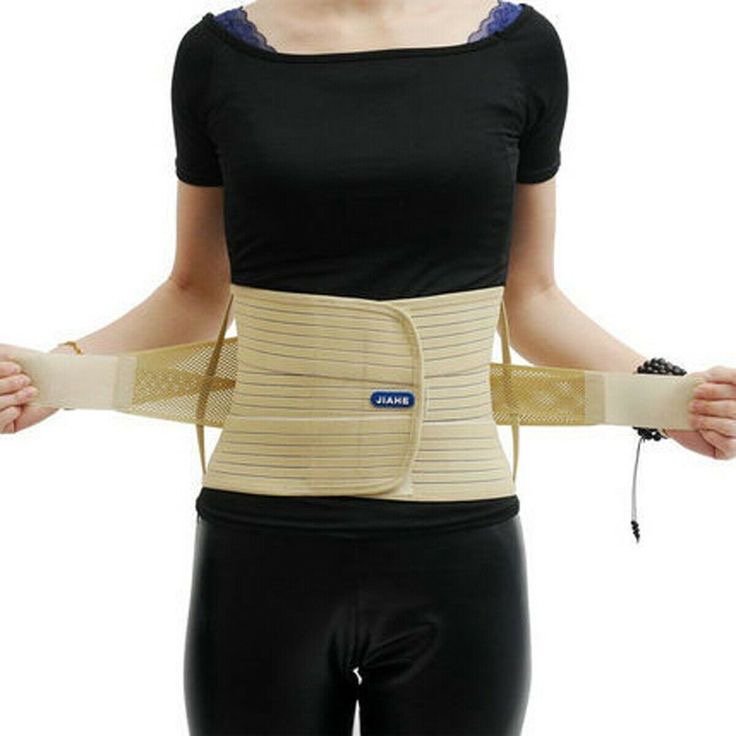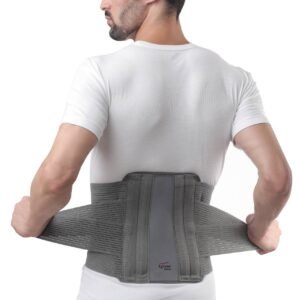
One of the best and fastest treatment for reducing back pain
- 2019-09-13
- 17 Likes
- 421 Views
- 0 Comments
randomized controlled trial comparing the long-term use of soft
lumbosacral orthoses at two different pressures in patients with chronic
nonspecific low back pain
Authors: Mahbobeh Samani a, Zahra Rojhani Shirazi b,d,⁎, Mohammad Hadadi c,d, Sobhan Sobhanib,d
a Student Research Committee, Department of Physical Therapy, School of Rehabilitation Sciences, Shiraz University of Medical Sciences, Shiraz, Ira
n
b Department of Physical Therapy, School of Rehabilitation Sciences, Shiraz University of Medical Sciences, Shiraz, Iran
c Department of Orthotics and Prosthetics, School of Rehabilitation Sciences, Shiraz University of Medical Sciences, Shiraz, Iran
d Rehabilitation Sciences Research Center, Shiraz University of Medical Sciences, Shiraz, Iran
:Keywords
Lumbar support
Brace
Orthotic therapy
Electromyography
Low back pain
Muscle strength
A B S T R A C T
Background: There is concern that wearing soft lumbosacral orthoses for prolonged periods may impair motor function. Moreover, the pressure applied by lumbosacral orthoses on the abdominal wall is usually ignored when these orthoses are prescribed
Method: In this randomized controlled trial study, 48 patients with chronic nonspecific low back pain were randomly divided into high pressure, normal pressure and control groups. All groups received medication for 4 weeks. The normal pressure and high pressure groups, in addition to medication, used soft lumbosacral orthoses at normal pressure and 50% increased pressure, respectively. Motor function outcome measures were strength, endurance, proprioception and electromyographic activity of the trunk muscles. Clinical outcome measures were pain and disability, which were evaluated in two sessions before and after a 4-week interval.
Findings: Isometric strength, endurance and most of the electromyographic parameters were generally unaffected by wearing the lumbosacral orthosis. Pain improved in all groups, and disability and proprioception improved in the high pressure and normal pressure groups. Between-group differences in these three measures indicated better results in the lumbosacral orthoses groups than in the control group. The improvements in pain and proprioception were significantly greater in the high pressure group than the normal pressure group.
Interpretation: Long-term use of lumbosacral orthoses had no significant adverse effects on motor function or clinical factors in patients with chronic low back pain. Increasing lumbosacral orthosis tightness may improve motor functioning and the clinical efficacy of the orthosis.
Clinical Trial Registration number: Code: IRCT201708192391N38.
Introduction
Approximately 70% to 80% of all people experience low back pain (LBP) at least once in their life. (Henchoz & So, 2008) Nonspecific LBP with no recognizable or known pathology is the most common type.(Balagué et al., 2012) Lumbosacral orthoses are one of the most common modalities of conservative management for LBP in the acute stage or acute exacerbations of chronic pain.(Sato et al., 2012) However, it is claimed that the long-term use of lumbosacral orthoses may have negative impacts on motor function factors, e.g. loss of strength, reduced endurance, and impaired proprioception and trunk muscle electromyographic (EMG) activity.(Azadinia et al., 2017) Therefore, the use of lumbosacral orthoses remains a major concern for clinicians. (Kawchuk et al., 2015) Despite the challenges and concerns associated with the use of these orthoses, they are still highly recommended (Fayolle-Minon & Calmels, 2008) in clinical settings due to their confirmed pain relief and functional improvements. (Hagiwara et al., 2017; Morrisette et al., 2014). Recent reviews found no conclusive scientific evidence to suggest that lumbosacral orthoses decrease muscle strength or trunk muscle endurance in patients with LBP compared to healthy people. (Azadinia et al., 2017; Takasaki & Miki, 2017) There are no studies of the long term effects of lumbosacral orthoses on proprioception in patients with LBP, and the only study of the effect of lumbosacral orthoses on trunk muscle EMG activity in patients with LBP assessed the effect of only 1 week of orthosis use, and reported no changes in trunk muscle EMG results.(Hamonet & Mezière, 1993) Therefore, despite concerns regarding the long-term use of lumbosacral orthoses, few studies to date have comprehensively examined the long-term effects of lumbosacral orthoses in the population with LBP. Moreover, tightness of the lumbosacral brace is usually disregarded when these orthoses are prescribed; hence patients are exposed to different abdominal pressures during the treatment period. By altering motor function factors, this source of pressure may influence the clinical efficacy of lumbosacral orthoses. The present study was designed to investigate motor function and clinical characteristics in patients with chronic nonspecific LBP who wore a soft lumbosacral orthosis at one of two different pressure levels for 4 weeks. We hypothesized that long-term use of soft lumbosacral orthoses, because of reduced muscle demand, would negatively influence motor function. Based on previous studies, (Hagiwara et al., 2017; Morrisette et al., 2014) we expected improvements in clinical signs. Additionally, we expected that motor function would be more severely
.affected when tighter lumbosacral orthoses were worn




Leave Your Comment